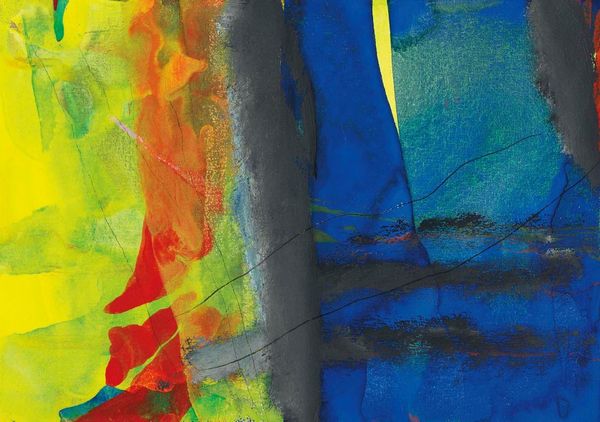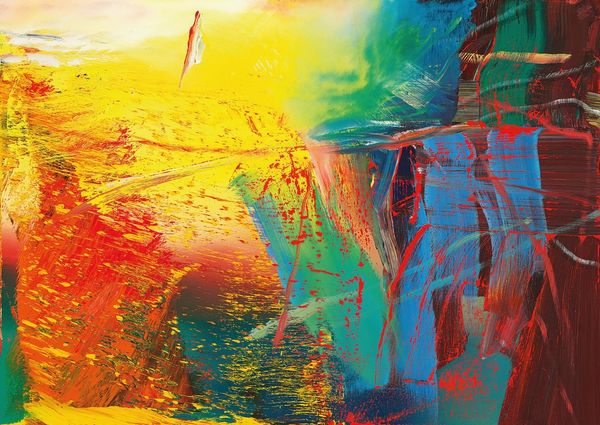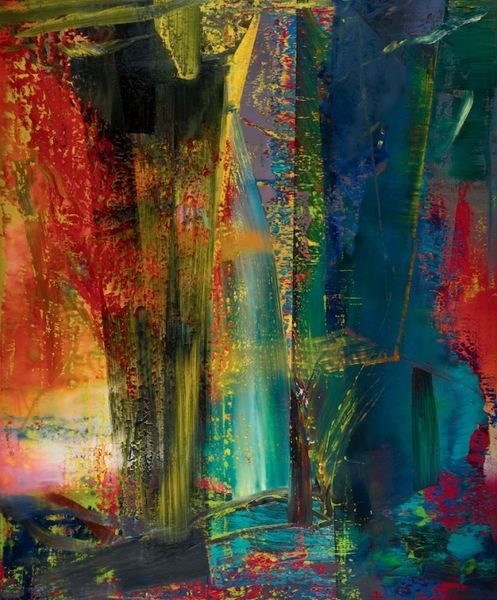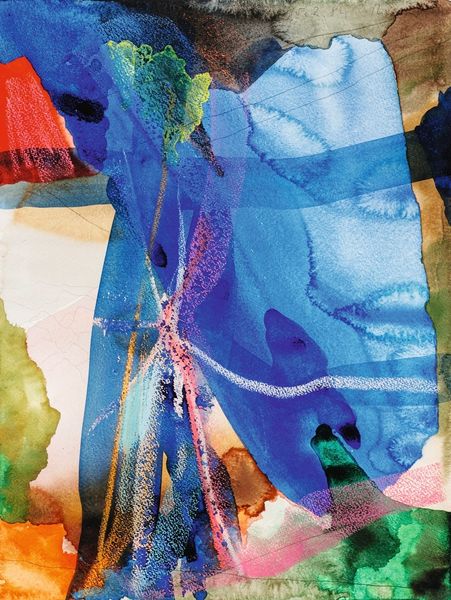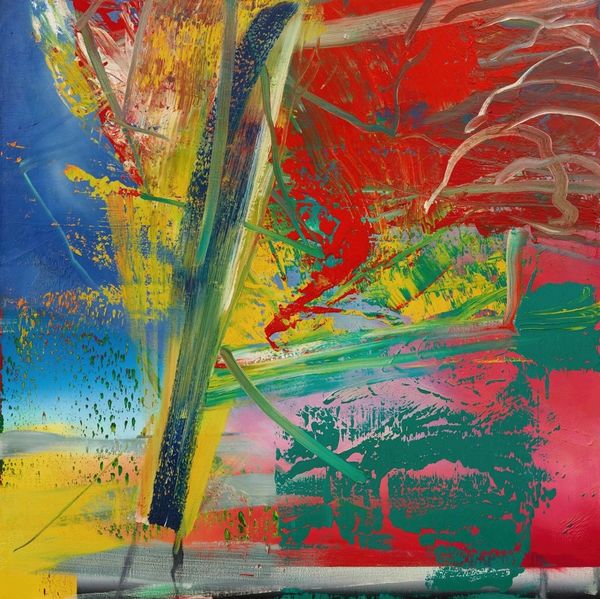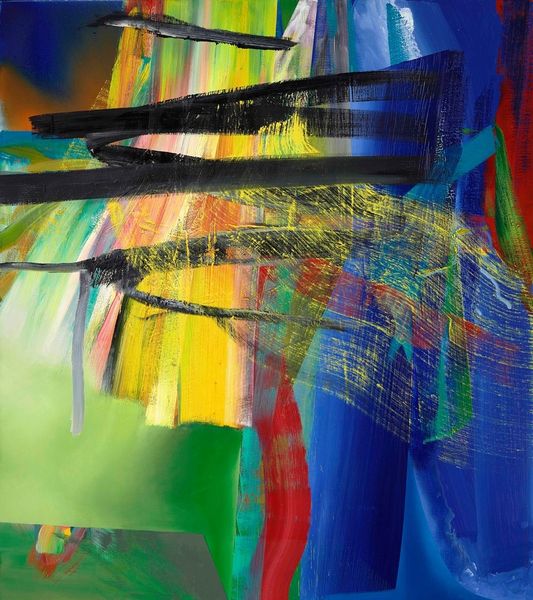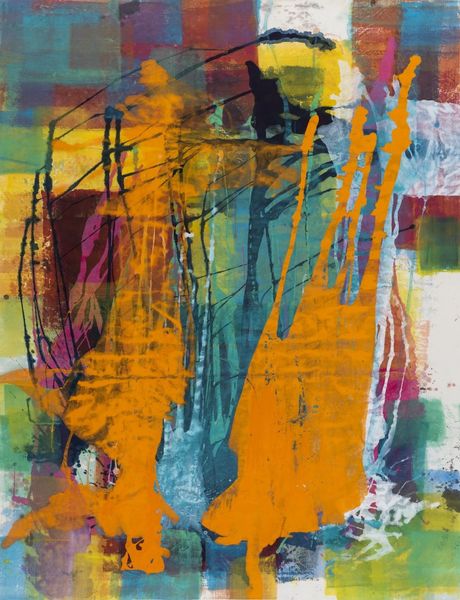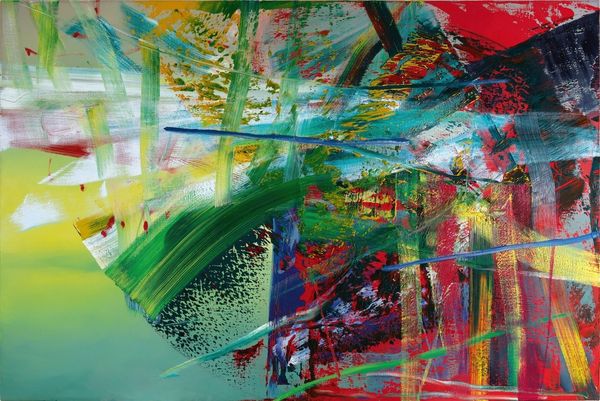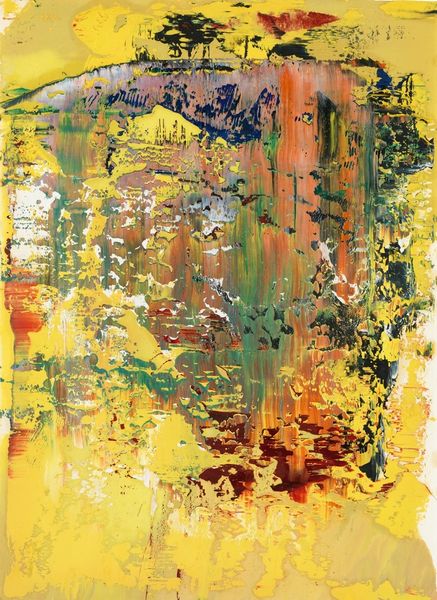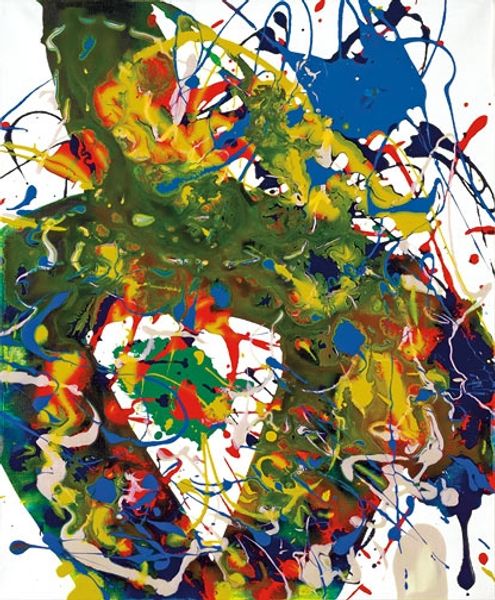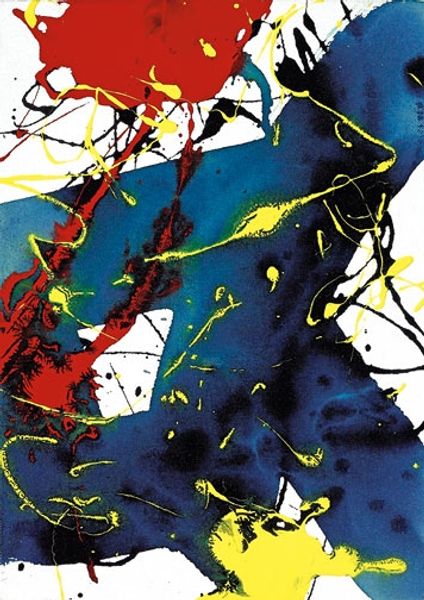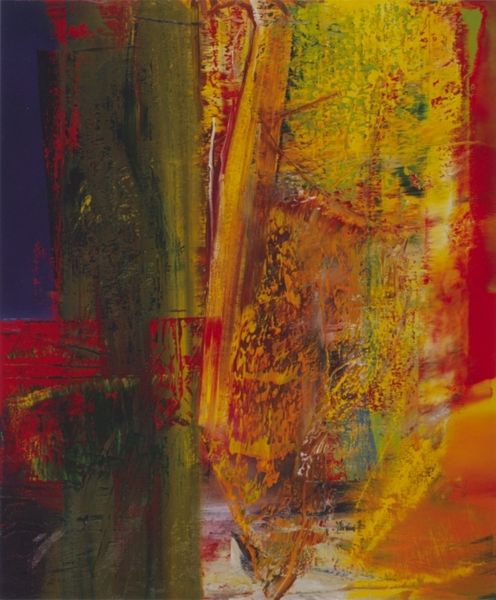
#
capitalist-realism
Copyright: 2019 Gerhard Richter - All Rights Reserved
Editor: So, this is Gerhard Richter's "Korn" from 1982, created with acrylic paint. I'm struck by the gestural quality of the brushstrokes. What is your take on it? Curator: As a materialist, I’m drawn to how Richter pushes paint to its physical limits here. The layering, the almost sculptural impasto...it's about the properties of the acrylic itself, isn't it? How it can be built up, scraped away, revealing the history of its making. Editor: Right, I see what you mean. The layering is interesting... almost like he's deliberately showing us the "work" of the painting. Curator: Precisely. Consider also the social context. 1982 was a time of shifting artistic paradigms. The dominance of minimalism was waning, and artists like Richter were actively challenging those austere boundaries. His conscious attention to the painting process elevated it. Editor: So, you're saying Richter's deliberate mark-making pushes against this traditional notion of effortless creation? Curator: Exactly. The materiality declares the active involvement of the artist in shaping the work; the physicality of applying the paint becomes the content. He questions this romantic ideal of the artist. He transforms it from pure artistry to something much more involved with consumption, labor and materiality. How does his choice of bold colors strike you? Editor: I'm no expert but I get your points. To me, they are the product of this material involvement, less about any symbolism and more about how Richter is utilizing this acrylic medium. I do love that there's so much to unravel about painting when one focuses on the material aspects. Curator: Yes, we’ve moved away from symbolism. By focusing on production and material we learn how Richter shifted painting discourse and created innovative artistic practices in his era.
Comments
No comments
Be the first to comment and join the conversation on the ultimate creative platform.
